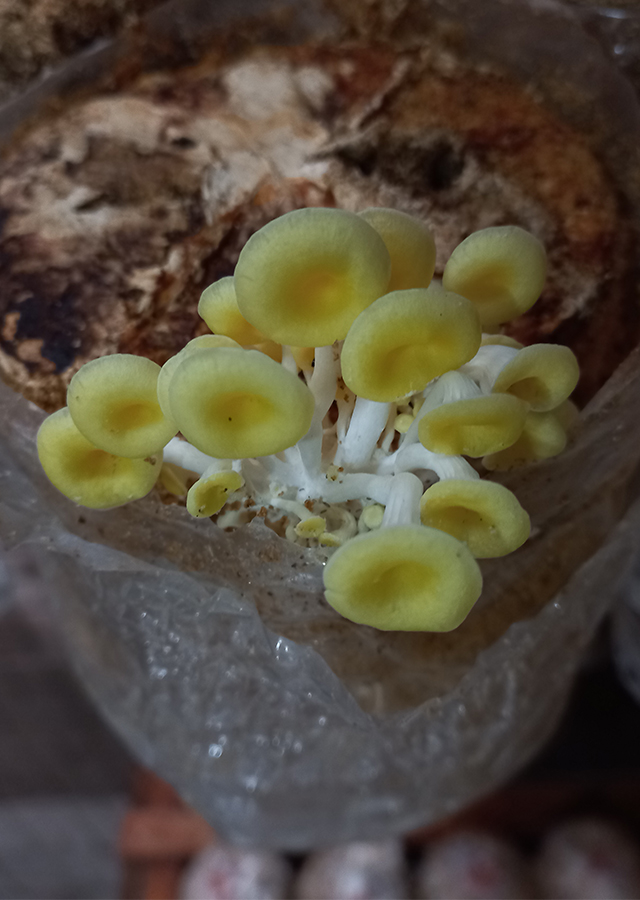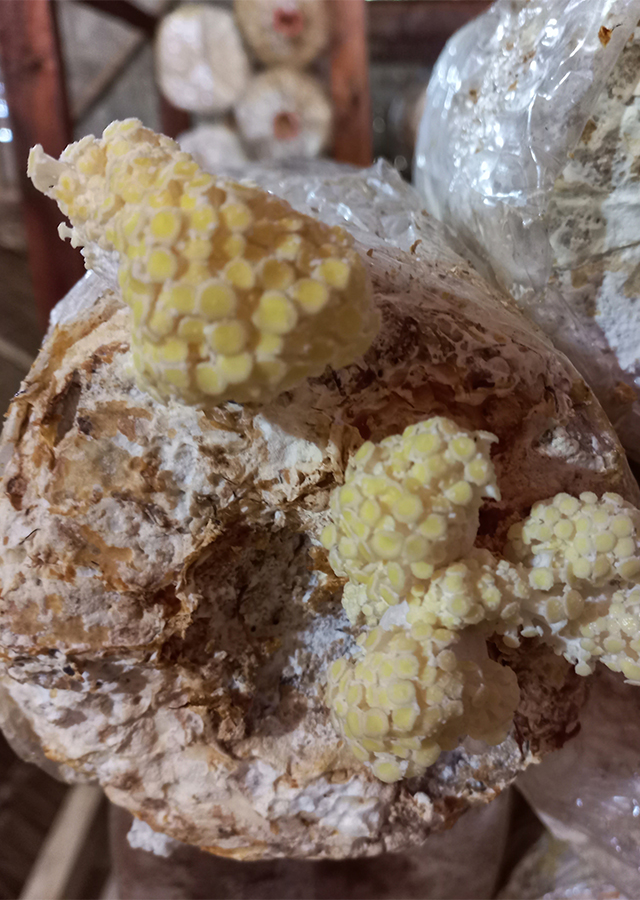Traditional Herbs from Pleurotus citrinopileatus
increase_men's_sexual_arousal_aphrodisiac
- Take enough yellow oyster mushrooms, wash them thoroughly.
- Boil until boiling, add a little salt.
- Eating boiled mushrooms is useful for increasing men's sexual arousal\u00a0(aphrodisiac).
What is Pleurotus citrinopileatus Looks like??



Parts of Pleurotus citrinopileatus that could be used
- All Parts of the Plant
Pleurotus citrinopileatus Distribution
Yellow oyster mushrooms originate from the subtropical hardwood forests of Eastern Russia, Northern China, and Japan. This mushroom has also spread to several countries and is starting to be cultivated commercially. In North America, the cultivation of this mushroom began around 2000. The yellow oyster mushroom or Pleurotus citrinopileatus is a mushroom that can be consumed and has many benefits in everyday life because it has high nutritional content, it is also useful as a source of antioxidants and other benefits that are good for health. Apart from that, the study results also show that this fungus has the potential to be successfully used in skin care products and cosmetics. This species has a very short shelf life and is fragile, so it is generally rarely available commercially in fresh form.Agroecology of Pleurotus citrinopileatus
Yellow oyster mushroom is a rotting fungus that feeds on hardwood such as oak, beech, elm, and other hard plants. Its habitat is in areas with warm climates and hardwood forests under trees. In Indonesia, areas with altitudes between 400 - 800 m above sea level and more than 800 m above sea level are suitable areas for cultivating oyster mushrooms. Yellow oyster mushrooms grow at room temperature and in warmer places. The need for sunlight is not much, but even though the intensity is low, sunlight is still needed for the development of spores-hyphae-mycelium. Without sunlight, formation is not optimal. The growth of oyster mushrooms also requires high humidity, around 80-90%. If the humidity is below 80% and lasts several days, the fruit body will dry out.
Morphology of Pleurotus citrinopileatus
- Cylindrical stem, short, white, often curved or bent, and about 20 - 50 mm long and 2 - 8 mm in diameter, the position is not exactly in the middle (asymmetrical), but slightly to the edge.
- Small fruit body , grows in clusters, bright yellow to golden brown with a dry, velvety surface texture. The young cap is usually funnel-shaped and as it ages, the cap may fade to almost whitish and the shape becomes flatter - 65 mm. The flesh of the fruit is thin and white, with a mild taste and without a strong odor.
- Gills (gills) are white, closely spaced, and run down the stem.
- The spores are very small, light, cylindrical or elliptical, smooth.
Cultivation of Pleurotus citrinopileatus
- Propagation via spores and tissue culture. Generally spores are spread by wind and beetles.
- Usually cultivated on grain, straw, or sawdust media.
Pleurotus citrinopileatus, more details :
Chemical Content of Pleurotus citrinopileatusLectins, glycoproteins, glucosylceramide, amino acids.
Benefits of Pleurotus citrinopileatus
Increases immunity, lowers blood sugar levels for diabetes sufferers, increases male sexual desire (aphrodisiac). Has activity as an antioxidant, antihyperlipidemia, antitumor, anticancer, anticholesterol, antiobesity.
Simplisia of Pleurotus citrinopileatus
Another Facts for Pleurotus citrinopileatus :
Synonym of Pleurotus citrinopileatusPleurotus cornucopiae var. citrinopileatus� (Singer) Ohira, Pleurotus cornucopiae subsp. citrinopileatus (Singer) O. Hilber
Habitus of Pleurotus citrinopileatus
Herb. Fungi, saprobic
Habitat of Pleurotus citrinopileatus
- Forest
No comments:
Post a Comment